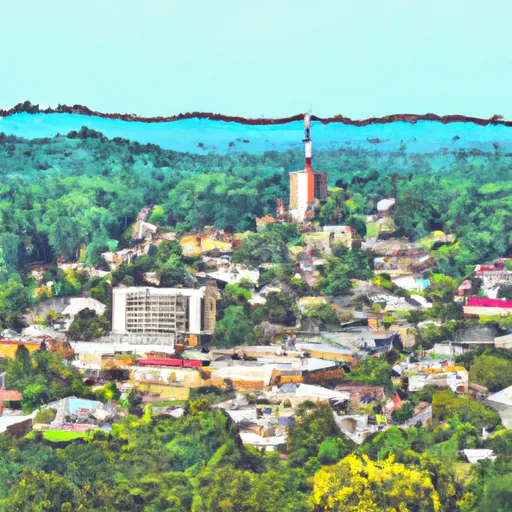-
 Snoflo Premium
Snoflo Premium
Get unlimited access to all our content
With no Ad interruptions! - Start Your Free Trial Login with existing account
Lizella
Eden Index
Climate
8.2
•
Recreation
6.2
•
Community
1.1
•
Safeguard
5.7/10

Lizella, Georgia is a small unincorporated community located in Bibb County. It has a humid subtropical climate, characterized by hot, humid summers and mild winters. Summers in Lizella are typically long, with temperatures averaging in the 90s°F (32-36°C), while winters are mild, with temperatures ranging from the 30s°F (0-4°C) to the 50s°F (10-15°C).
Lizella benefits from its proximity to several water bodies, including the Tobesofkee Creek and Lake Tobesofkee. These hydrological constituents offer opportunities for various outdoor activities such as fishing, boating, and swimming. Lake Tobesofkee is a popular spot for recreational boating and water sports, with multiple boat ramps and marinas available throughout the area.
Additionally, Lizella boasts several parks and nature reserves, providing ample opportunities for hiking, camping, and wildlife observation. One notable outdoor destination is the Claystone Park, located on the shores of Lake Tobesofkee. The park features picnic areas, walking trails, and a sandy beach for swimming.
Overall, Lizella, Georgia offers a pleasant climate, abundant water resources, and various outdoor recreation opportunities, making it an ideal destination for nature enthusiasts and those who enjoy water-based activities.
What is the Eden Index?
The Snoflo Eden Index serves as a comprehensive rating system for regions, evaluating their desirability through a holistic assessment of climate health, outdoor recreation opportunities, and natural disaster risk, acknowledging the profound impact of these factors on livability and well-being.
Climate Health Indicator (CHI): 8.2
Lizella receives approximately
1160mm of rain per year,
with humidity levels near 86%
and air temperatures averaging around
18°C.
Lizella has a plant hardyness factor of
8, meaning
plants and agriculture in this region tend to thrive here all year round.
By considering the ideal temperature range, reliable water supplies, clean air, and stable seasonal rain or snowpacks, the Climate Health Indicator (CHI) underscores the significance of a healthy climate as the foundation for quality living.
A healthy climate is paramount for ensuring a high quality of life and livability in a region, fostering both physical well-being and environmental harmony. This can be characterized by ideal temperatures, reliable access to water supplies, clean air, and consistent seasonal rain or snowpacks.
Weather Forecast
Streamflow Conditions
Altamaha
Area Rivers
Altamaha
Snowpack Depths
Altamaha
Reservoir Storage Capacity
Altamaha
Groundwater Levels
Recreational Opportunity Index (ROI): 6.2
The Recreational Opportunity Index (ROI) recognizes the value of outdoor recreational options, such as parks, hiking trails, camping sites, and fishing spots, while acknowledging that climate plays a pivotal role in ensuring the comfort and consistency of these experiences.
Access to outdoor recreational opportunities, encompassing activities such as parks, hiking, camping, and fishing, is crucial for overall well-being, and the climate plays a pivotal role in enabling and enhancing these experiences, ensuring that individuals can engage in nature-based activities comfortably and consistently.
Camping Areas
| Campground | Campsites | Reservations | Toilets | Showers | Elevation |
|---|---|---|---|---|---|
| Georgia Veterans State Park | None | 273 ft | |||
| Arrowhead County Park | None | 390 ft | |||
| Claystone County Park | None | 410 ft | |||
| Dames Ferry County Park | None | 424 ft | |||
| Indian Springs State Park | None | 503 ft | |||
| High Falls State Park | None | 600 ft | |||
| Central City Park - State Fairgrounds | None | 295 ft | |||
| Hard Labor Creek State Park | None | 713 ft | |||
| Newton Factory Shoals Rec Area | None | 608 ft | |||
| Fort Yargo State Park | None | 914 ft |
Nearby Ski Areas
Catastrophe Safeguard Index (CSI):
The Catastrophe Safeguard Index (CSI) recognizes that natural disaster risk, encompassing floods, fires, hurricanes, and tornadoes, can drastically affect safety and the overall appeal of an area.
The level of natural disaster risk in a region significantly affects safety and the overall livability, with climate change amplifying these risks by potentially increasing the frequency and intensity of events like floods, fires, hurricanes, and tornadoes, thereby posing substantial challenges to community resilience and well-being.
Community Resilience Indicator (CRI): 1.1
The Community Resilience Indicator (CRI) recognizes that education, healthcare, and socioeconomics are crucial to the well-being of a region. The CRI acknowledges the profound impact of these elements on residents' overall quality of life. By evaluating educational resources, healthcare accessibility, and economic inclusivity, the index captures the essential aspects that contribute to a thriving community, fostering resident satisfaction, equity, and social cohesion.

